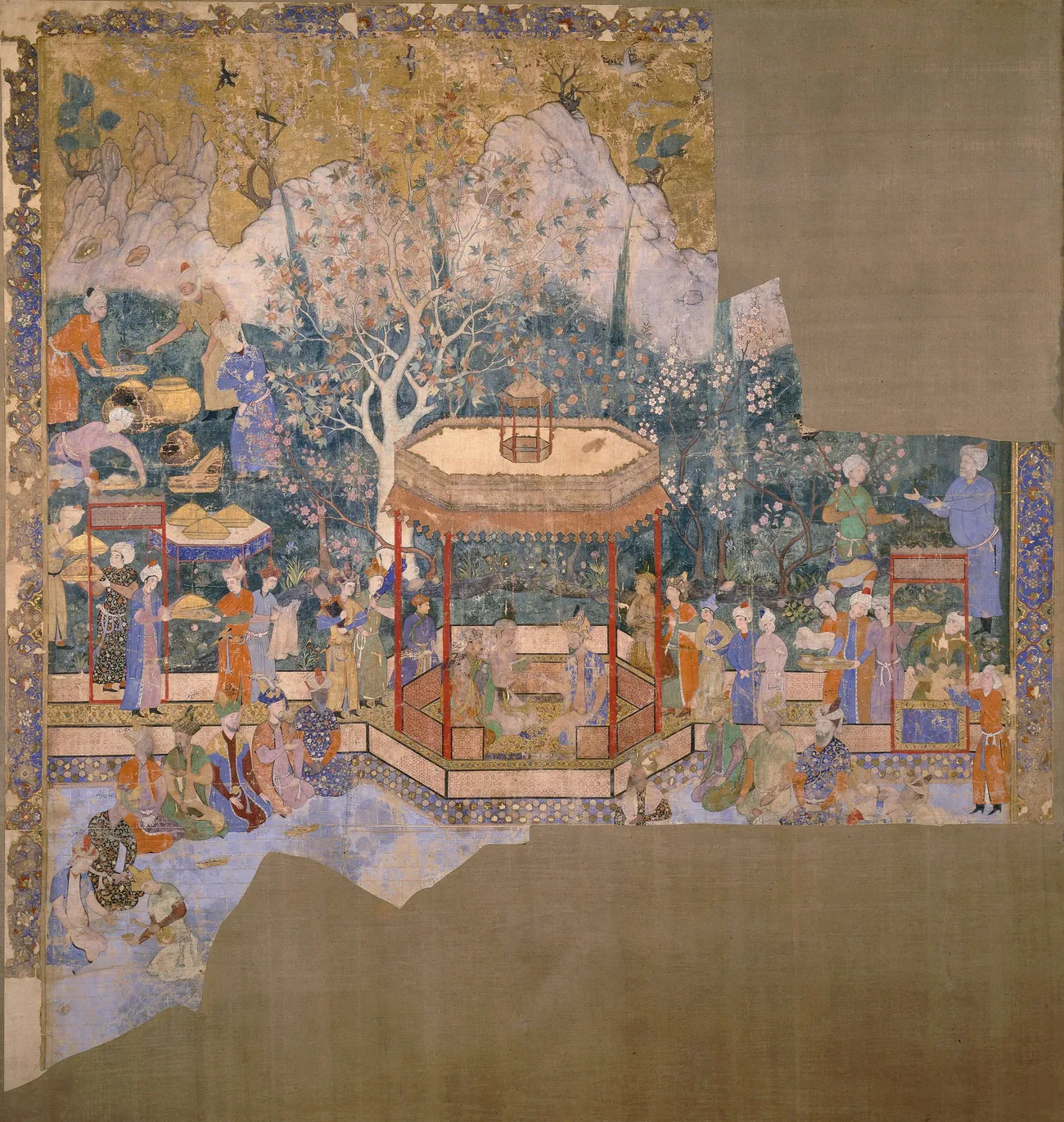The miniature depicting Humayun Mirza is considered the oldest known example of Mongolian miniature.
The miniature is painted on delicate cotton fabric with colors and gold paints. The surviving part depicts a ruler sitting in a garden pavilion, dressed in Central Asian style. Servants stood on either side of him, and he turned towards the guest. On both sides are court officials, and servants are visible in the background. The foreground of the miniature, which currently does not exist, probably depicts a palace entertainment program performed by dancers and musicians. It was described by art historian J.M. Rogers as a form of Islamic visual art that developed in India in the 16th and 17th centuries.
It is assumed that the central figure in the work was Humayun, the second ruler of the Mughal dynasty, who lived from 1508 to 1556. Another noteworthy aspect of the work is that many of its facial features were later reworked, that is, newly painted to depict other Mughal rulers. This circumstance goes beyond the role of the miniature as a simple portrait, turning it into a genealogical - that is, a visual document reflecting the history of the dynasty. Every face, every gaze is a part of its time, a symbol of the succession of rulers.
In these aspects, this work serves not only as an example of art, but also as a historical, political, and cultural statement.
A copy of this miniature will be placed in the Center of Islamic Civilization in Uzbekistan.

